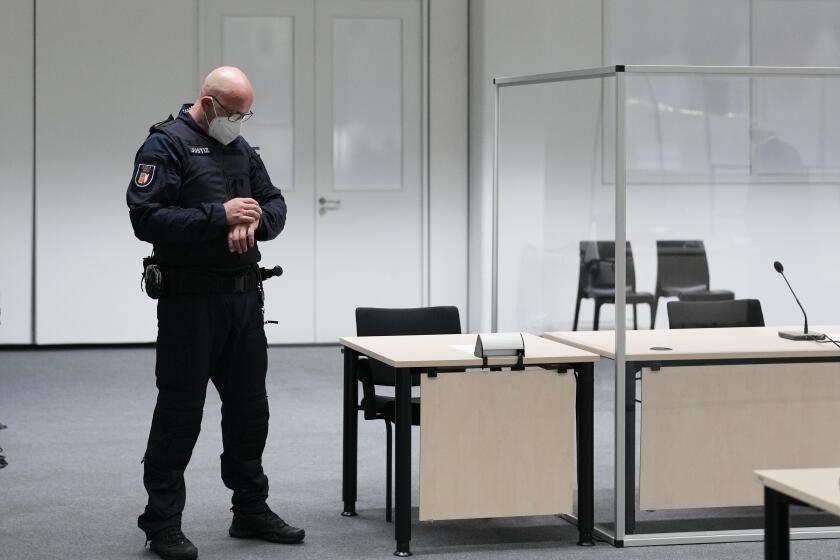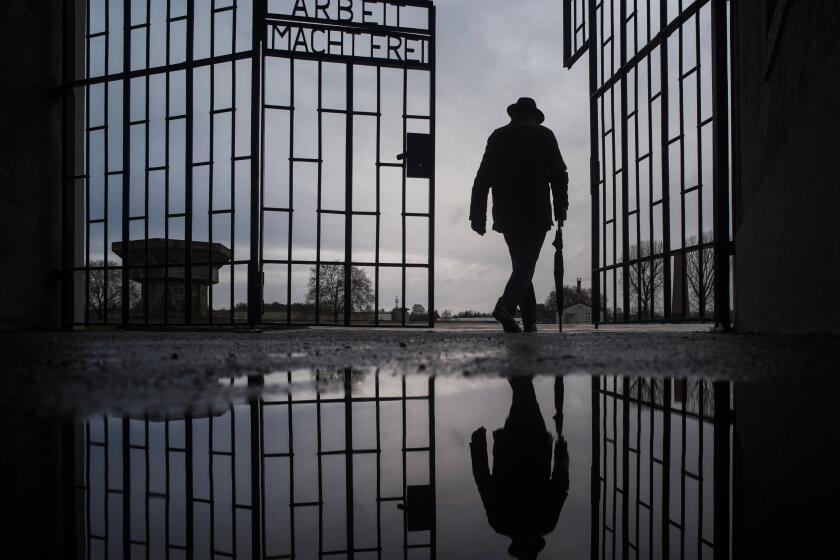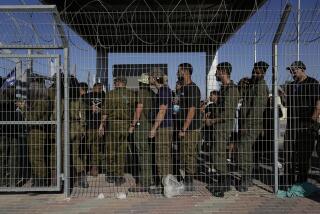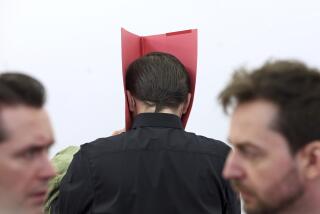Former Nazi camp guard, 101, sentenced to 5 years for aiding in the murder of thousands
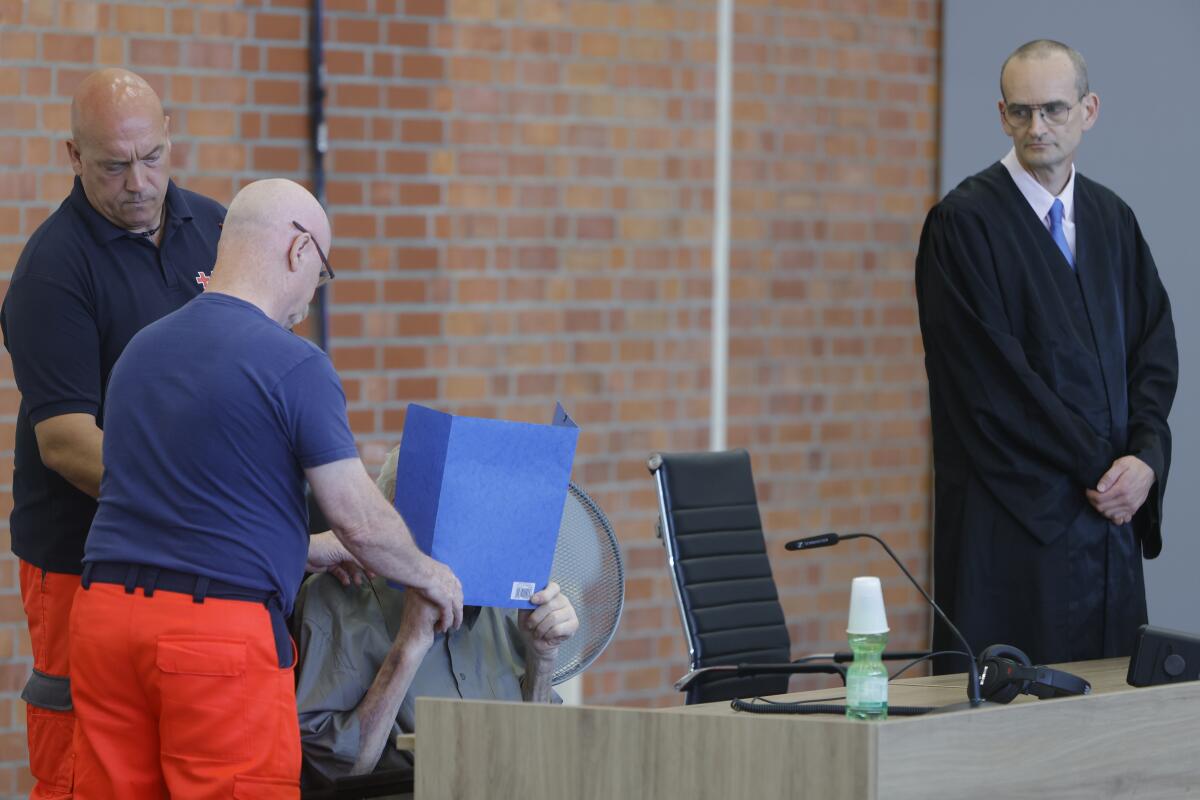
- Share via
BERLIN — A 101-year-old man was convicted Tuesday in Germany of more than 3,500 counts of accessory to murder for serving at the Nazis’ Sachsenhausen concentration camp during World War II.
The Neuruppin Regional Court sentenced him to five years in prison.
The man, who was identified by local media only as Josef S., had denied working as an SS guard at the camp and aiding and abetting the murder of thousands of prisoners.
In the trial, which opened in October, the centenarian said that he had worked as a farm laborer near Pasewalk in northeastern Germany during the period in question.
However, the court considered it proven that he worked at the camp on the outskirts of Berlin between 1942 and 1945 as an enlisted member of the Nazi Party’s paramilitary wing, the German news agency DPA reported.
“The court has come to the conclusion that, contrary to what you claim, you worked in the concentration camp as a guard for about three years,” Presiding Judge Udo Lechtermann said, according to DPA, adding that in doing so, the defendant had assisted in the terror and murder machinery of the Nazis.
A former secretary to the SS commander of the Nazis’ Stutthof concentration camp is going on trial on more than 11,000 counts of accessory to murder.
“You willingly supported this mass extermination with your activity,” Lechtermann said. “You watched deported people being cruelly tortured and murdered there every day for three years.”
Prosecutors had based their case on documents relating to an SS guard with the man’s name, date and place of birth, as well as other documents.
The five-year prison sentence was in line with the prosecution’s demand.
The defendant’s lawyer had demanded an acquittal. Defense attorney Stefan Waterkamp said after the pronouncement of the sentence that he would appeal the verdict, DPA reported.
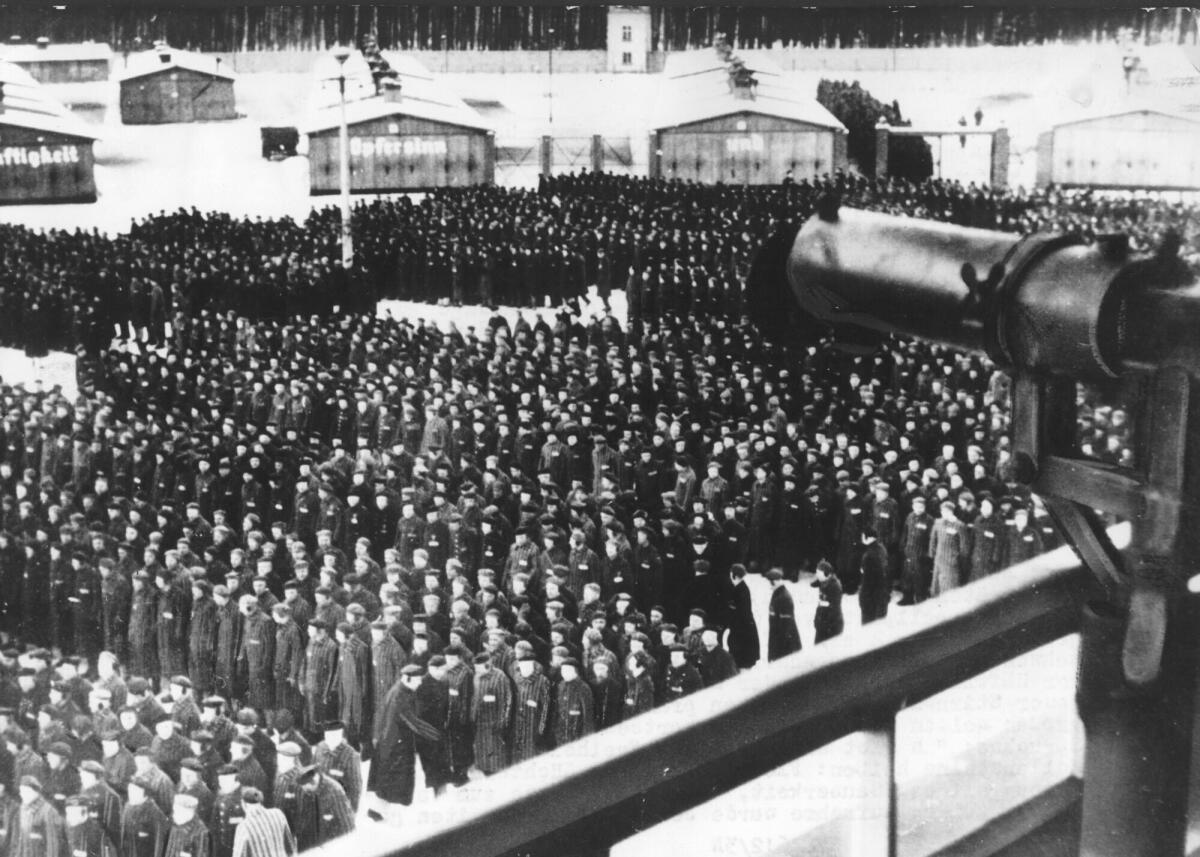
Germany’s leading Jewish group welcomed the verdict.
“Even if the defendant will probably not serve the full prison sentence due to his advanced age, the verdict is to be welcomed,” said Josef Schuster, the head of the Central Council of Jews in Germany.
“The thousands of people who worked in the concentration camps kept the murder machinery running. They were part of the system, so they should take responsibility for it,” Schuster added. “It is bitter that the defendant has denied his activities at that time until the end and has shown no remorse.”
For organizational reasons, the trial was held in a gymnasium in Brandenburg/Havel, the defendant’s place of residence. The man was fit to stand trial to only a limited extent and was able to participate in the trial for only about two and a half hours each day. The trial was interrupted several times for health reasons and hospital stays.
UCLA architecture professor’s plans for transforming the Sachsenhausen facility into an artistic memorial trigger a debate.
Efraim Zuroff, the head Nazi hunter at the Simon Wiesenthal Center’s office in Jerusalem, told the Associated Press that the sentence “sends a message that if you commit such crimes, even decades later, you might be brought to justice.”
“And it’s a very important thing because it gives closure to the relatives of the victims,” Zuroff added. “The fact that these people all of a sudden feel that their loss is being addressed and the suffering of their family who they lost in the camps is being addressed ... is a very important thing.”
However, Zuroff expressed concern that Josef S. might serve only part of the five-year sentence or none at all because of his planned appeal and his advanced age.
Sachsenhausen was established in 1936 just north of Berlin as the first new camp after Adolf Hitler gave the SS full control of the Nazi concentration camp system. It was intended to be a model facility and training camp for the labyrinthine network that the Nazis built across Germany, Austria and occupied territories.
Demjanjuk, an Ohio autoworker whose U.S. citizenship was twice stripped, had steadfastly denied being a Nazi collaborator. He died in Germany in 2012.
More than 200,000 people were held there between 1936 and 1945. Tens of thousands of inmates died of starvation, disease, forced labor and other causes, as well as through medical experiments and systematic SS extermination operations including shootings, hangings and gassing.
Estimates of those killed vary, with the upper ones positing about 100,000, but scholars suggest that figures of 40,000 to 50,000 are likely more accurate.
In its early years, most prisoners were either political prisoners or criminal prisoners, but they also included some Jehovah’s Witnesses and gay men. The first large group of Jewish prisoners was brought there in 1938 after the so-called Night of Broken Glass, or Kristallnacht, an antisemitic pogrom.
During the war, Sachsenhausen was expanded to include Soviet prisoners of war — who were shot by the thousands — as well as others.
News Alerts
Get breaking news, investigations, analysis and more signature journalism from the Los Angeles Times in your inbox.
You may occasionally receive promotional content from the Los Angeles Times.
As in other camps, Jewish prisoners were singled out at Sachsenhausen for particularly harsh treatment, and most who remained alive by 1942 were sent to the Auschwitz death camp.
Sachsenhausen was liberated in April 1945 by the Soviets, who turned it into a brutal camp of their own.
Tuesday’s verdict relies on recent legal precedent in Germany establishing that anyone who helped a Nazi camp function can be prosecuted for accessory to the murders committed there.
In a different case, a 96-year-old woman went on trial in late September in the northern German town of Itzehoe. The woman, who allegedly worked during the war as the secretary for the SS commandant of the Stutthof concentration camp, has been charged with more than 11,000 counts of accessory to murder.
More to Read
Sign up for Essential California
The most important California stories and recommendations in your inbox every morning.
You may occasionally receive promotional content from the Los Angeles Times.
